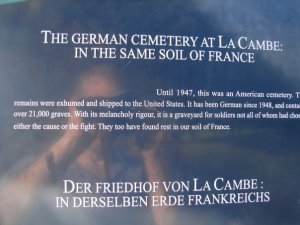My mother, Ann Byrne, took part in the second march from Selma, Alabama, in 1965. The first march took place on March 7, 1965 and was supposed to go to Montgomery. It gained the nickname “Bloody Sunday” after its 600 marchers were attacked at the Edmund Pettus Bridge leaving Selma; state troopers and county posse attacked the unarmed marchers with billy clubs and tear gas.
On March 8, the Southern Christian Leadership Conference asked for a court order prohibiting the police from interfering with another march. Instead, Federal District Court Judge Frank Johnson issued a restraining order, prohibiting the march from taking place until he could hold additional hearings later in the week. The SCLC leadership decided to do another march on March 9 but to do one which wouldn’t violate the court order.
On March 9, “Turnaround Tuesday,” Dr. King led about 2,500 people to the Edmund Pettus Bridge and held a short prayer session. State troopers, police, and marchers confronted each other, but when the troopers stepped aside to let them pass, King led the marchers back to the church they started from. That night, a white group beat and murdered civil rights activist James Reeb, a Unitarian Universalist minister from Boston, who had come to Selma to march in the second march, which had been joined by many other clergy and sympathizers from across the country.
Following that march President Lyndon Johnson, whose administration had been working on a voting rights law, held a televised joint session of Congress on March 15 to ask for the bill’s introduction and passage.
The third march started on March 21. With Gov. Wallace refusing to protect the marchers, President Johnson committed to do so, sending 2,000 soldiers of the U.S. Army, 1,900 members of the Alabama National Guard under Federal command, and many FBI agents and Federal Marshals. The marchers averaged 10 miles a day along U.S. Route 80, known in Alabama as “Jefferson Davis Highway.” About 25,000 marchers arrived in Montgomery on March 24 and at the Alabama State Capitol on March 25.
Con: What made you want to go to Selma?
Ann: That is easy. My children’s dentist called me up one night. He was a man who had a lot of friends including Elizabeth Kubler-Ross and had us for dinner parties.
He called me up and said “What are we going to do, what are we going to do?” I said, “Dr. Shapiro what are you talking about? What do I know?” He said, “You did not see? You did not hear?” And he described the events of the day before. At the bridge, the beatings on the bridge, the dogs, the tear gas and whatever. I said, “I do not know, what are you going to do?” He said, “I do not know, I do not know…” And then I do not remember how that conversation ended but it ended. Then I went to work and I called and talked to Connie [Fay] and Hannah [McLaren] and a third woman, whose name escapes me. And they were making plans to go down and help out with the kitchen because there would always be a kitchen and they would always need help. And that moved me and I came home and I said to Nick, “I want to go to Selma, I want to go see this.” And he said well and then he called his editor and worked it out with his editor since I would presumably not be gone for very long, couple of weeks. And he called Mike Royko and then the next day I went. And I knew enough to be afraid.
Con: You and Mike drove down?
Ann: Mike? No, Mike and I took the train down. In a wonderful old fashioned Pullman Car – not one of the ones with the beds because we spent the night in the bar where Mike almost took some guy out who was too drunk and was pestering a woman. I found the whole experience pretty … “Wow, I am out in the big world!” Because for years I had been staying home, taking care of the kids.
Con: Where did the train go to?
Ann: The train went to Atlanta… Atlanta?
Con: No.
Ann: I flew home out of Atlanta. Where did the train go to? Maybe Birmingham. Very likely. But from Birmingham I had to get to Selma and Mike said we are not to be seen together. The further south we go, the less we are to be seen together.
Con: Why is that?
Ann: Because he was journalist.
Con: That was dangerous?
Ann: That was not a good thing. Because I was not a journalist, I was just a nosey, nosey Northerner. So anyway at some point we had to split and we split. I do not remember how I got to Selma itself, but all I know is, may be on a bus. In the little tiny dinky bus station, I had the phone number of St. Joseph’s. I must call them. So I called St. Joseph’s. I was really unaware of what I was doing and what complications I was needlessly bringing to other people’s lives. That was what I was unaware of. I called and I said, “Hi my name is Ann von Hoffman and I am here at the bus station could I have a lift?”
“Stay right there,” said the voice at the other end. “We will get there as fast we can.”
So I sort of looked around. You know nobody seem to be looking at me very much so you know and also during that period I was wearing my hair long by the way so I must have looked a little wacky. Anyway, do I have a suitcase, I do not know, probably that would have been a dead giveaway you know, the suitcase. Somebody came and got me and drove me off. I was utterly, unexpected. I soon began to lose my sense of guilt for imposing on them because it was clear that there were a lot of unexpected guests coming in and they were all headed towards St. Joseph’s, which served as a reloading station. For three years afterwards I sent money to that little church since they were so good to us.
I was put in the public housing somebody, some woman volunteered you know. There were two young priests in there with me. One of the things I remember is they were snickering to each other and when we had all gotten more comfortable with each other, they were snickering and I said “What are you snickering about?” and they said, “Oh, well father so and so, you know, he is very young…”
They were very young themselves.
They said, “He is very young and he is lodged with some woman down there and he said, he could hardly get any sleep because the doorbell was ringing all night.
Con: Because of company or because she was a prostitute?
Ann: She was a prostitute.
Ann: My memories don’t have a lot to do with the hot, bad summer because I was inside that housing project almost all the time. At night you could go to the edge and this was very romantic, the edge of the housing project, and the youth – particularly the SNCC[i] youth were down there leading singing. I was a happy camper. I wrote down and this I will kill myself someday for this, I have lost, long lost the lyrics I wrote down. Then they were making them up as they went along and I was scribbling like mad. At least I knew it was worth saving, even I did not get to save it. We would sing, the evening would go on. There would be certain amount of little bits of taunting.
Con: When you said there would be some taunting, would people come down and taunt you or …
Ann: No, we were taunting.
Con: Oh, you were taunting the cops.
Ann: It was not me anyway. It was the kids.
There was a little boy and your father put this in the newspaper article he wrote after he interviewed me. A little boy, he looked at me and said, “Hi, what is your name? Can I touch your hair?” And I said, “Sure, can I touch yours?” So he touched my long, long, long, long red hair. And I touched his fuzzy, fuzzy short sharp black hair. And I remember that with some embarrassment because I thought maybe I should not. But I was still embarrassed you know. Was that a wrong thing to do?
Anyway, so and then the other thing is some…, at some point during the day, a group of, a group went marching around. And the marching itself chanting, got the adrenaline movement you know.
Con: Marching around the project or…?
Ann: Inside. And they got closer and closer to, to deciding to break through and then somebody calmed us down. Somebody caught up with us and smoothed us down. So, and then we marched to the church.
Then there was the march to Selma. By this time, I had met a couple of really interesting people. One was a man from Birmingham, a young white man from Birmingham. I was impressed. He had brought a book of poems with him. Tells you several things. And he and I were marching with an African-American woman, from the projects. Everybody was holding hands and we were marching abreast. Because I know there were three of us. But, my God that was a weird thing to do.
Con: What was weird?
Ann: It just felt weird while you were doing it. It felt weird partially because we were at the back of the line and did not quite know where we were going. We were being led by the official, top people, you know, the big senior types like Martin and John Lewis. Those people, every so often one of us would say, [whispering voice], “There are the biggies.” No doubt they were leading us but also and no doubt arrangements have been made with the cops to keep the path the clear so we can march to the Selma City Hall. But we don’t know this, and I didn’t know it and they did not need to tell us.
Con: Right, you were just, you were there to …
Ann: Just as cannon fodder. So we marched very nervously, speaking for my own self. And speaking for them: Because their palms were twice as sweaty as mine. And after a while we were ordered off. And we turned our way back. And then that seemed to have been very nearly the end of that, particular protest. The march to Montgomery was being planned and I knew that I did not have the freedom to do that because I had to go back home because I only had this time off.
The other thing I remember is what everybody who has been in there part of the Selma already knows but to me it was news. The houses of the poor are one story and had wooden plank porch, not a very big porch. Sometimes you have, sort of wooden canopy but mostly not. People sitting on, rocking. That is what I remember. Then I came home and Nicholas interviewed me and wrote a newspaper story which the Sun-Times published.
Con: That is a good story.
Ann: It is an honest one.
[i] Student Nonviolent Coordinating Committee




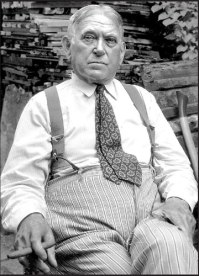
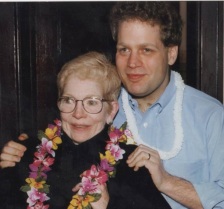
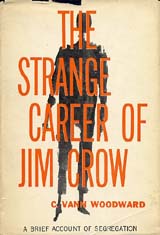


 Not sure how I came across
Not sure how I came across 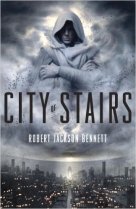 Like Europe in Autumn,
Like Europe in Autumn, 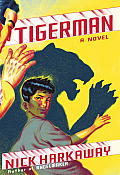 My friend David Durand tipped me to
My friend David Durand tipped me to 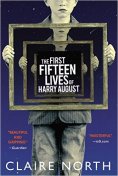 I never thought I would have any interest in a time travel book again. Then I read
I never thought I would have any interest in a time travel book again. Then I read  Like The First Fifteen Lives of Harry August
Like The First Fifteen Lives of Harry August  Frank M. Young,
Frank M. Young,  The military is composed of four
The military is composed of four

 It is also more than any other nation. In fact it is as much as the military budgets of the nations with the 2nd through 13th largest militaries combined.
It is also more than any other nation. In fact it is as much as the military budgets of the nations with the 2nd through 13th largest militaries combined.


